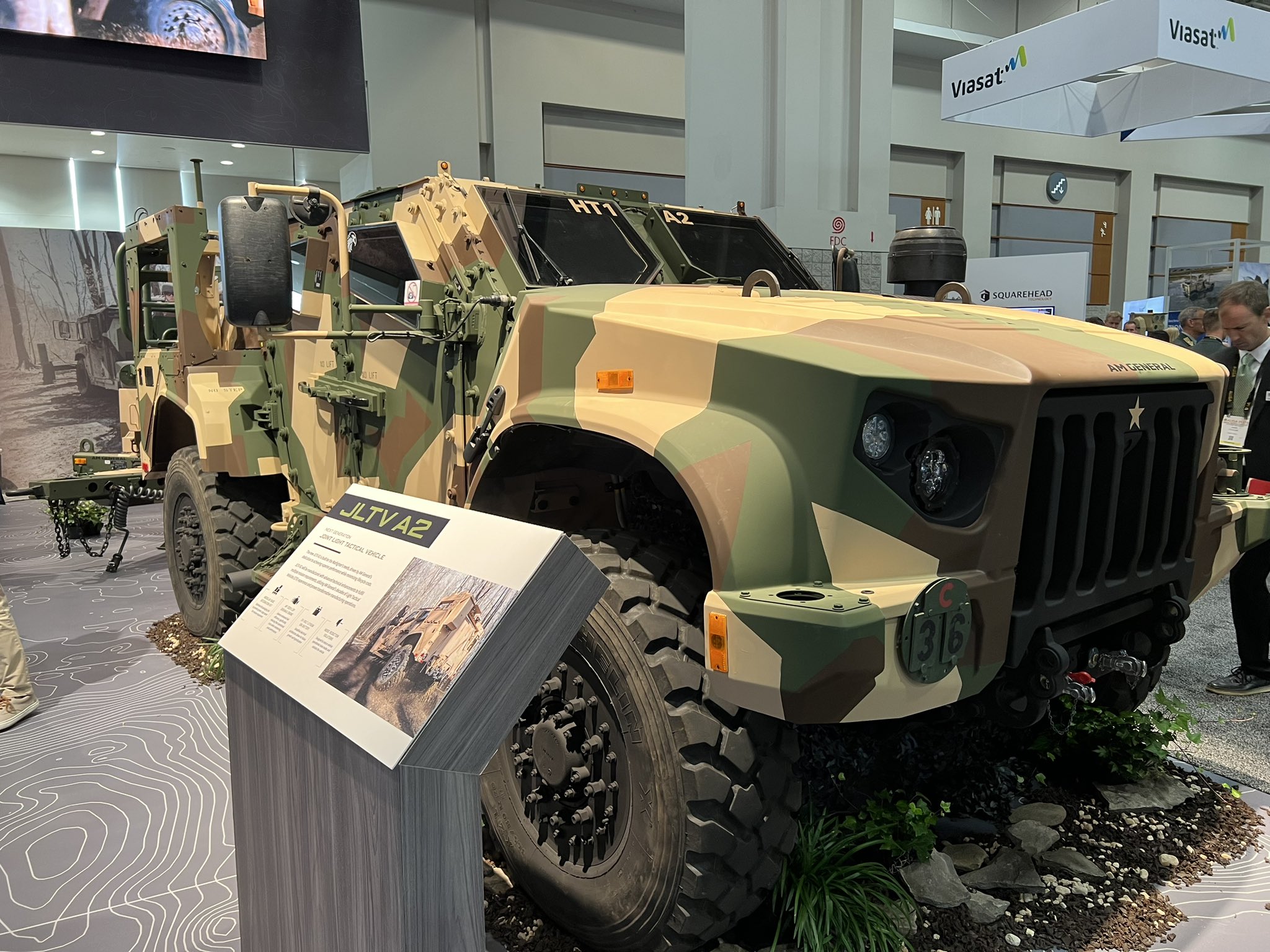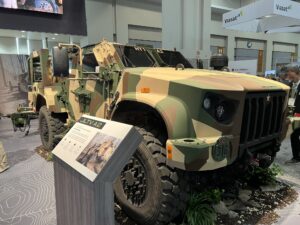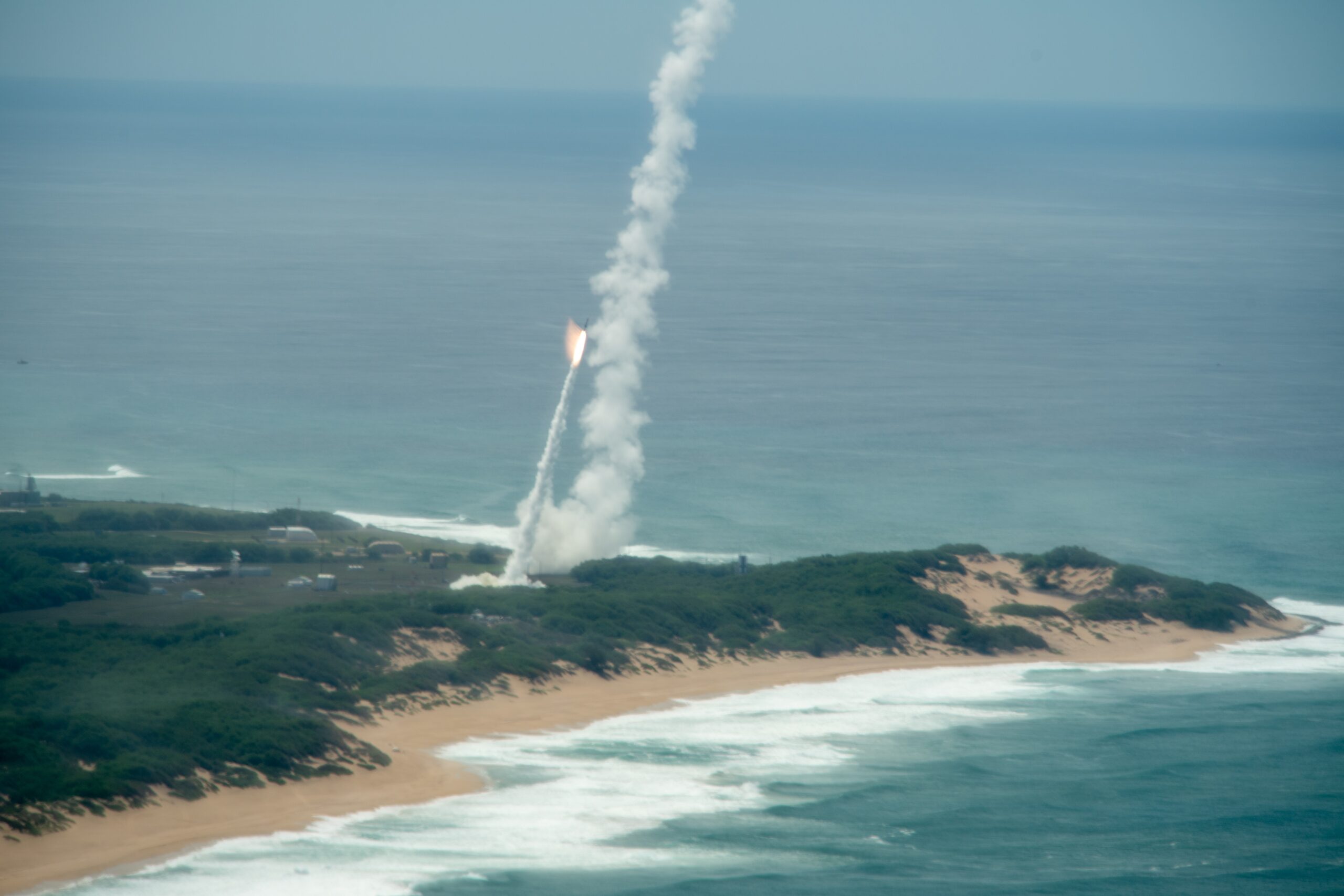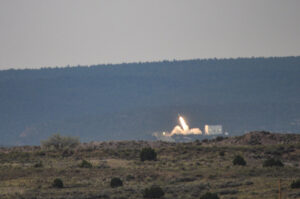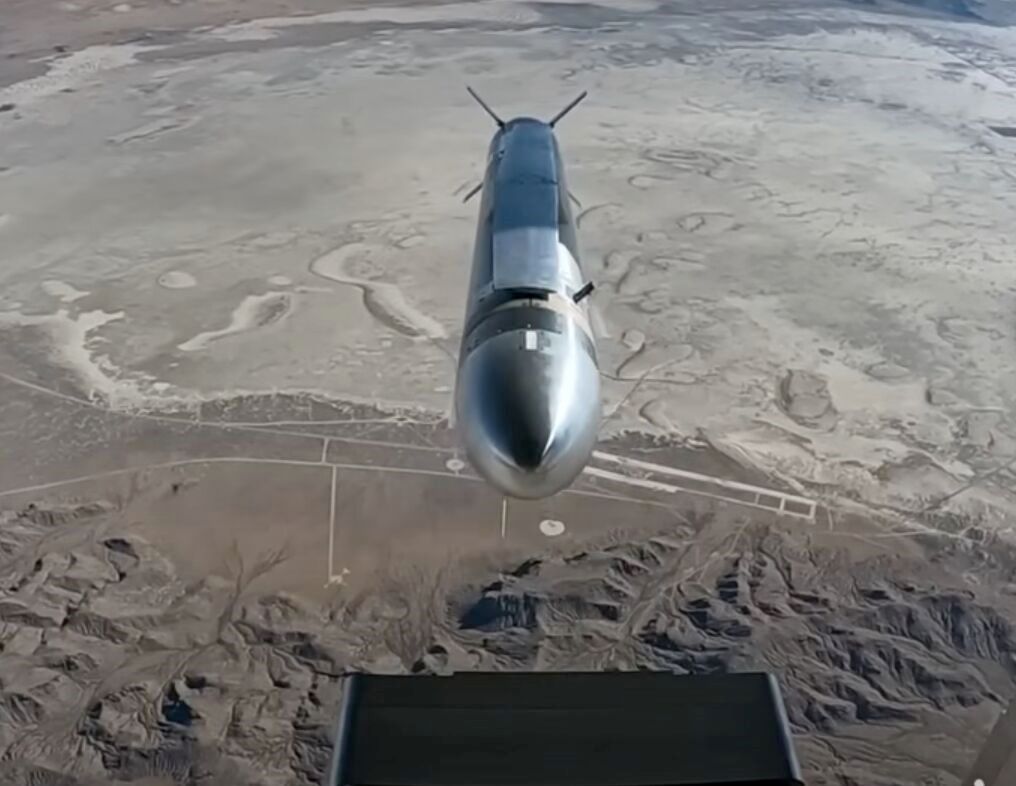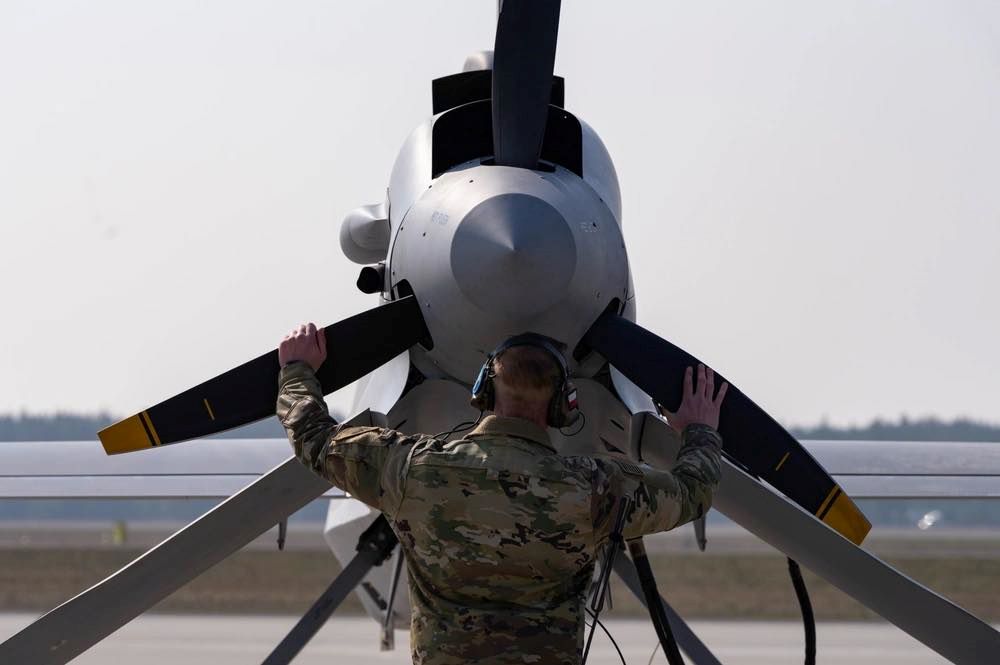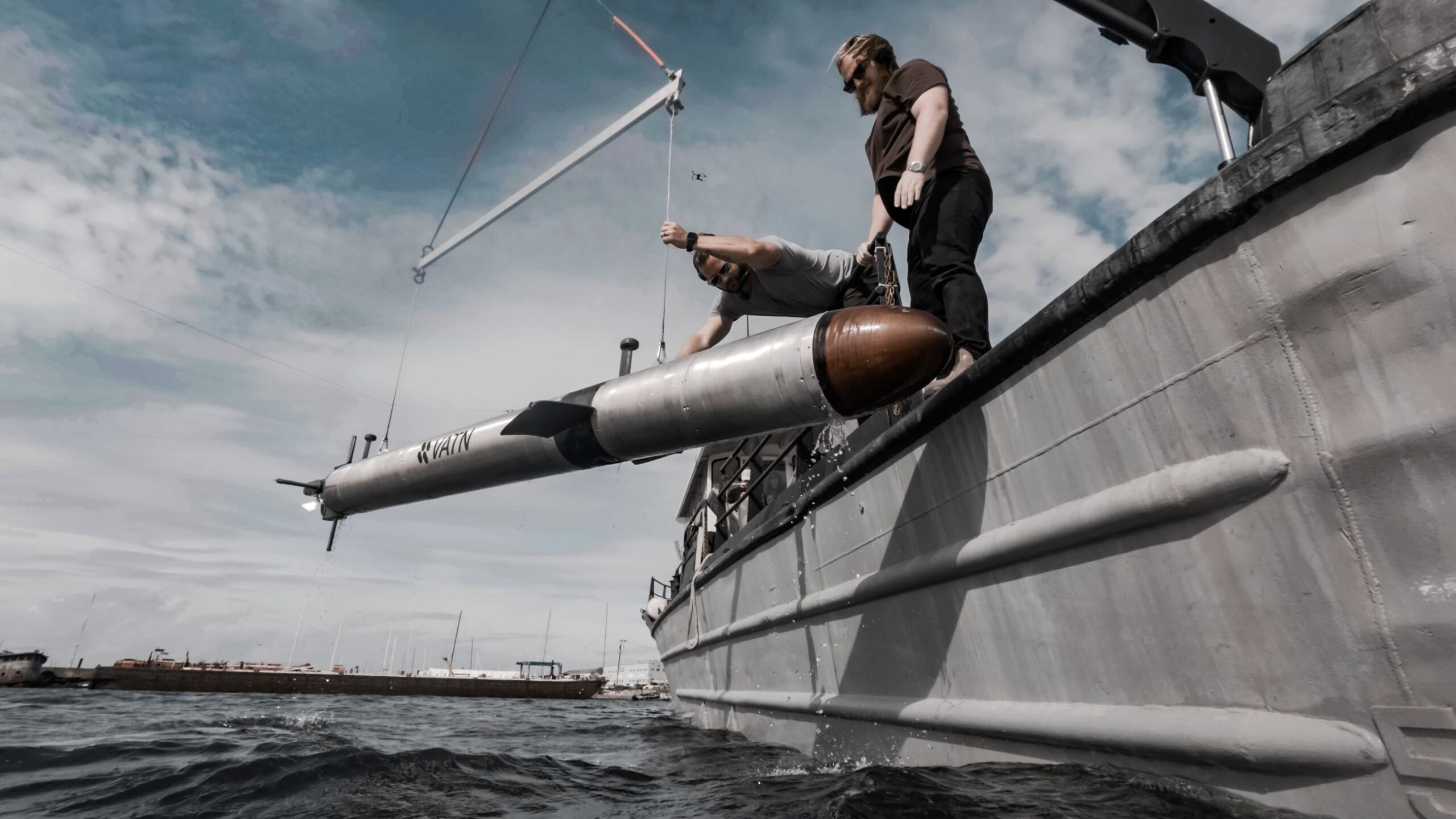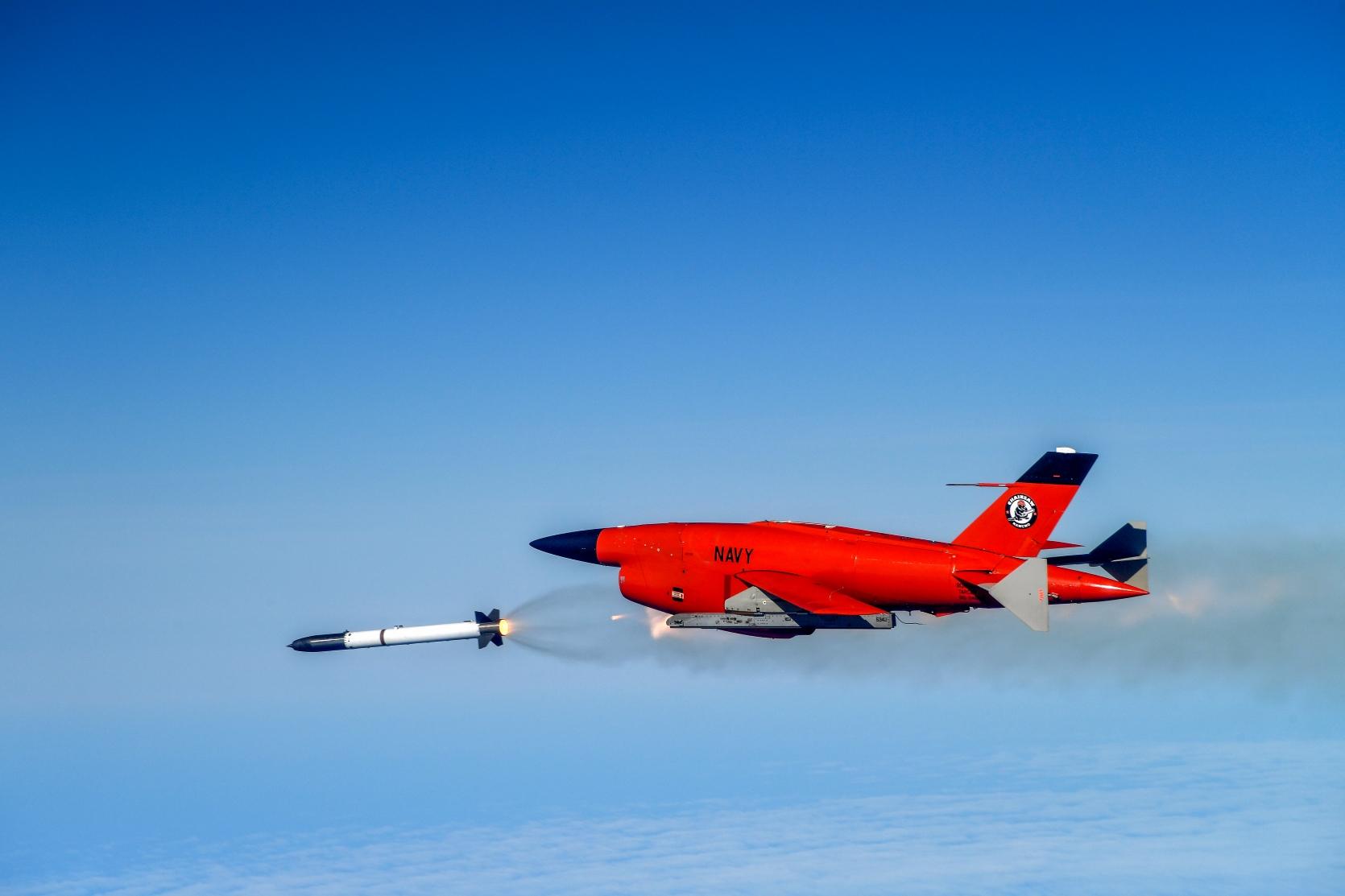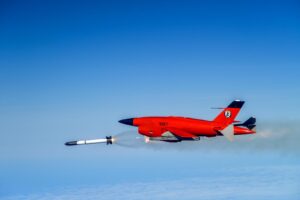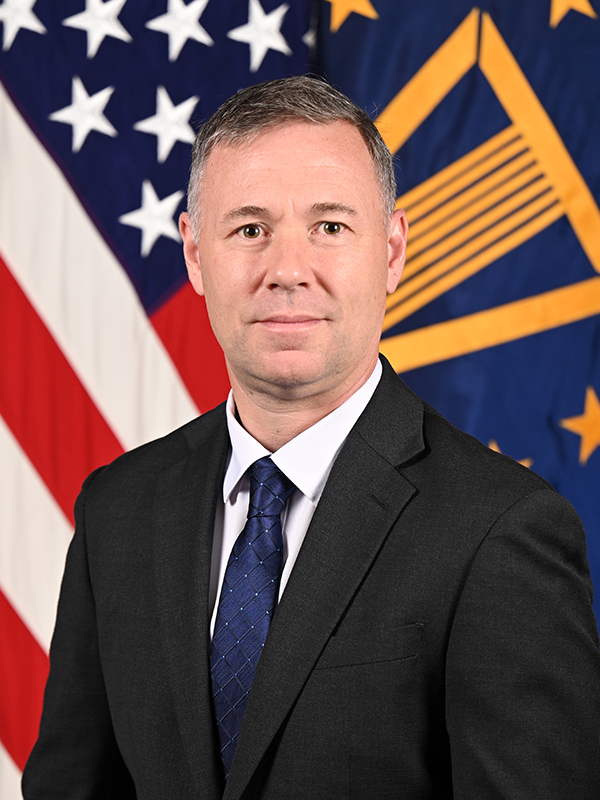FORGEing Solutions. The Defense Innovation Unit last week issued the “FORGE: Foundry for Operational Readiness and Global Effects
” solicitation, which is getting after advanced manufacturing solutions to “boost production capacity and remove production bottlenecks for cast metal parts used in high-performance aeronautical systems.” DIU is open to novel manufacturing methods that support high rate production and achieve the government goals for survivability, reliability, and affordability. Responses are due by May 26.
Upcoming Cloud Contract. Acting Defense Department Chief Information Officer Katie Arrington says the next evolution of the department’s cloud computing service contract will broaden opportunities and take advantage of the “entire buying power of the Department of Defense.” There will be more small business opportunities, “that’s thing one,” she told a House Armed Services subcommittee last Thursday. “Looking forward to this contract and having the multitudes of capabilities out there, from large providers all the way to the micro providers,” she said. The “full force” of DoD’s buying power will include software-as-a-service, Arrington said, adding that a “core tenant” will be a zero trust approach to cybersecurity.
Hypersonic Navigation. Included in two recent successful flight tests of a hypersonic vehicle that reached sustained speeds above Mach 5 included Northrop Grumman’s Advanced Technology Hypersonic Technology Inertial Measurement Unit aboard the Stratolaunch Talon-A2 aircraft. The successful flights “move engineers one step closer to precisely navigating hypersonic vehicles in GPS-denied environments, further protecting the trajectory of the hypersonic vehicle from adversary threats,” Northrop Grumman said last week. “No inertial measurement system built today has been up to the task of navigation at hypersonic speed, until now,” Josei Chang, senior director of advanced technologies at Northrop Grumman’s Research and Development business unit, said in a statement.
Cislunar Awareness. A satellite designed to provide space situational awareness between Earth and the moon successfully completed hot fire testing in March, a critical milestone in Oracle-M’s readiness, Space Systems Command (SSC) said last week. The pathfinder satellite is “designed to provide persistent situational awareness in cislunar space, demonstrating new tracking and navigation capabilities essential for future space operations,” SSC said. “The mission will showcase tracking and tracking and trajectory estimation for monitoring cislunar objects, cloud-based ground operations with integrated government and contractor collaboration, and navigation and communications using affordable commercial ground systems.” SSC and the Air Force Research Laboratory are managing Oracle-M, which AFRL developed.
OSC Data Support. The Defense Department’s Office of Strategic Capital is interested in rapidly prototyping solutions that can leverage data to help it fulfil its mission of attracting and scaling private capital for critical supply chain technologies with commercial and national security applications. The four focus areas in the “Increasing Access to Data and Effective Knowledge Management” Area of Interest include credit-based financial tools to attract and scale investment in enabling and frontier technologies, teaming with private capital investors to co-develop critical technologies, identifying critical technologies developed by emerging international companies, and exemplary risk management. Solution briefs are due by May 19.
Drone Swarming Collab. Artificial intelligence and machine learning company Hardy Dynamics is leveraging BigBear.ai’s AI, data, and sensor orchestration platform, ConductorOS, to help drones operating in swarms work autonomously with each other. Hardy is working under a Direct-to-Phase II Small Business Innovation Research contract in support of an Army initiative under the Defense Department’s Project Linchpin that seeks to deliver trusted AI/ML capabilities to the Army’s Program Executive Office for Intelligence, Electronic Warfare & Sensors.
Mesh Networking. Off-grid connectivity hardware and software supplier goTenna last week introduced its first mesh networking solution for integration on military and law enforcement platforms. The Pro X2m devices expands on goTenna’s Pro X2 radio used by tactical operators by integrating the “secure communications technology into autonomous and machine-based systems to bolster interoperability, situational awareness, and operator safety,” the company said. The New Jersey-based company says the X2m offers line-of-sight ranges from 15 to 55 miles and is difficult to detect.
Lionfish Cyber. Program Executive Officer for Unmanned and Small Combatants Rear Adm. Kevin Smith recently boasted that the Navy and industry partner HII’s Mission Technologies business segment have made “great strides” on the Lionfish small UUV. They are “quickly accumulating a number of firsts,” like making it the Navy’s first cybersecure UUV in the last weeks, he said May 7 during the International Mine Warfare Technology Symposium. Smith said other UUVs without the same level of cybersecurity protection will require “significant updates” to comply with a security classification guide set down by the Undersea Warfare Division in the Office of the Chief of Naval Operations, N97.
…Acceleration. Notably, Smith said the kinds of accelerated acquisition the Navy used in Lionfish has saved over two years in time and money compared to typical acquisition. He argued Lionfish is a good example of how partnerships with the Defense Innovation Unit (DIU) and other Other Transaction Authority (OTA) arrangements are “becoming more common than your typical program of record acquisition framework” on new unmanned systems. Smith also said Lionfish has more modularity than previous UUVs so they can more easily swap out sections like freshly charged batteries and new sensors, so it needs less maintenance or repairs. Smith said the Navy hopes “more companies will study that process, that success of Lionfish, and offer to pursue similar pathways of development, acquisition and broader use of innovation maintenance and strategies.”
Restoring T-10. The Navy is currently performing “significant revitalization” at Naval Air Systems Command’s T-10 Test Cell Facility at Patuxent River, Md., to allow engine testing in a noise-suppressed environment. T-10 has been closed for over a decade, but now the Navy said this restoration work is “essential for supporting the Engine Test Instrumentation Replacement System (ETIRS), a next-generation capability designed to improve engine performance evaluations across multiple aircraft platforms.” Once T-10 is operational again, it will provide a controlled, weather-independent testing environment that reduces reliance on more costly off-site evaluations and mitigates schedule risks. The Navy noted ETIRS will provide faster and more accurate diagnostics for Fleet Readiness Centers (Level II), Carrier Aircraft Intermediate Maintenance Departments, and Marine Aviation Logistics Squadrons.
Formidable Shield 2025. The 2025 edition of the NATO At Sea Demonstration/Formidable Shield (ASD/FS) maritime exercise began on May 3, led by U.S. 6th Fleet. Executed by Naval Striking and Support Forces NATO (STRIKFORNATO), the biennial exercise in the North and Norwegian Seas and North Atlantic Ocean is the largest at-sea live-fire exercise in the European region. It aims to enhance alliance interoperability with a joint, Integrated Air and Missile Defense environment using NATO command and control reporting structures. This increment will include live-fire events against unmanned air and surface systems; subsonic, supersonic and ballistic targets; include multiple allied ships; multi-nation and service ground-based air defenses; and aviation forces working across multiple battlespaces. Participants include Belgium, Canada, Denmark, France, Italy, the Netherlands, Norway, Spain, U.K. and U.S. The Navy noted Australia is participating but only providing a radar sensor for data collection. Tis includes more than 16 ships, 27 aircraft, eight ground units, 6,900 personnel, and both the National Advanced Surface-to-Air Missile System (NASAMS) and High Mobility Artillery Rocket System (HIMARS).
Another Lost Super Hornet. Another F/A-18E/F assigned to the USS Harry S. Truman (CVN-75) was lost overboard on May 6, CNN first reported. The two-seater F/A-18F reportedly went overboard after an unsuccessful attempt to slow down when landing on the carrier. While both aviators safely ejected, the aircraft was lost in the Red Sea. This came a week after an F/A-18E was lost overboard with its tow tractor. Previously, in December one of the Super Hornets assigned to the carrier was shot down in a friendly fire incident by the USS Gettysburg (CG-64). No servicemembers have been lost in these incidents. CVN-75 started operating in the Red Sea in February, following emergency repairs in Greece after a collision with a merchant vessel in Egypt.
PEO SSN. Rear Adm. Jonathan Rucker, program Executive officer for Attack Submarines (SSN), visited Austal USA’s facility in Mobile, Ala., on May 8, touring their advanced ship manufacturing facility. He specifically saw progress made on the company’s construction of its new 369,600 square foot modular manufacturing facility, Module Manufacturing Facility-3 (MMF-3), designed to produce submarine modules. MMF 3 is one of the submarine industrial base outsourcing sites as the Navy works with prime submarine builders General Dynamics Electric Boat and HII’s Newport News Shipbuilding to move more work outside their facilities to quicken boat construction. MMF-3 is expected to achieve initial operating capability by summer 2026. During his visit, Rucker saw seven submarine modules under construction.
TOC-L Protest. The Government Accountability Office (GAO) has rejected a protest by Lockheed Martin of a U.S. Air Force $293 million award to Science Applications International Corp. (SAIC) last year in the second round of the service’s competition to find an integrator for the Tactical Operations Center-Light (TOC-L) program under the Air Force’s Advanced Battle Management System (ABMS) effort. Lockheed Martin is the integrator for the first stage of the program–a three year effort which began in January 2023 and includes procurement of 16 TOC-L experimental systems and integration with sensors. Lockheed Martin contended that SAIC’s position as the cloud-based command and control (CBC2) contractor for the Air Force and SAIC’s membership in the digital infrastructure consortium create an organizational conflict of interest, but GAO agreed with the Air Force that the service’s systems engineering and design review processes had “mitigated” any OCI.
AFC/TRADOC Merger. With the Army planning to merge its modernization-focused Futures Command with Training and Doctrine Command, Gen. Randy George, the service’s chief of staff, told lawmakers this week the combined organization will be called Army Transformation and Training Command. The primary headquarters for the consolidated command will be in Austin, Texas, where Futures Command is currently located. The Army is combining the two organizations as part of its new transformation initiative.
Obadal Perspective. Michael Obadal, nominee to be Army under secretary, said during his confirmation hearing this week that Army leadership must give this merged AFC and TRADOC command “very specific outcomes and milestones to meet and define how they are going to streamline the requirements in the interests of the soldiers and defense industrial base.” “We know that we need to, according to the statements of the secretary, streamline our commands and our organizations. When I look at a merged TRADOC and AFC, I am confident that the Army can utilize the lessons learned over the last several years and apply them,” Obadal said.
Menace. Anduril Industries said on May 7 that its Menace family of expeditionary command and control capabilities is now the “preferred hardware platform” for Palantir’s Edge software. “Modern battlefield software relies on hardware that can survive and scale in the real world. With Palantir’s stack running natively on Menace systems, government operators get a software-defined solution that’s built to deploy fast, operate anywhere, and integrate with the systems they already use,” Anduril said in a statement.
Saudi Arabia/AMRAAMs. The State Department said on May 2 it approved a potential $3.5 billion deal with Saudi Arabia for 1,000 AIM-120C-8 Advanced Medium Range Air-to-Air Missiles and 50 AIM-120C-8 AMRAAM guidance sections. Along with the RTX-built AMRAAMs, the new foreign military sale (FMS) also includes missile containers, support equipment, spare parts and engineering, technical, and logistics support services. “This proposed sale will support the foreign policy goals and national security objectives of the United States by improving the security of a partner country that contributes to political stability and economic progress in the Gulf Region,” the Defense Security Cooperation Agency said in a statement.
Ukraine F-16 Support. The State Department on May 2 also approved a potential $310.5 million FMS case with Ukraine for equipment and service in support of the F-16 fighter jets that have been provided to Kyiv by international partners to assist in its fight against Russia. The deal includes aircraft modifications and upgrades, personnel training related to operation, maintenance and sustainment support, spare parts and engineering, technical and logistics support services. “The proposed sale will improve Ukraine’s capability to meet current and future threats by ensuring its pilots are effectively trained and by increasing its interoperability with the United States through comprehensive training with the U.S. Air Force. This proposed sale aligns with international coalition contributions for the establishment of Ukraine’s F-16 program and the overall modernization of Ukraine’s air force,” the DSCA said in a statement.
Czech and Norway FMS. The State Department on May 5 then approved two more possible FMS cases to include a $181 million deal with the Czech Republic for communications equipment and a $370.9 million sale of AIM-9X Block II Tactical Missiles to Norway. The deal with the Czech Republic includes AN/PYQ-10A(C) simple key loaders, AN/PRC-160, AN/PRC-163 and AN/PRC-167 radios, RF-300M-DL(C) small secure data links and support equipment, with L3Harris as prime contractor. The FMS case with Norway covers 300 RTX-built AIM-9X Block II Sidewinder tactical missiles, two AIM 9X Block II special air training missiles, 24 AIM 9X Block II captive air training missiles (CATM), 20 AIM 9X Block II Tactical guidance units and 20 AIM 9X Block II CATM guidance units.
Prospecting. The National Geospatial-Intelligence Agency is seeking information from contractors who can get access to data and analysis on rare earth minerals and battery industrial sectors to improve the agency’s global view of trade. “This will allow NGA to monitor key developments in precious mineral markets, and the precious mineral global supply chains,” it says in a May 9 Request for Information titled, Prospector. Responses are due by June 9.
Oracle-M. The United States Space Force Space Systems Command and the Air Force Research Laboratory say that they conducted a hot fire test for the Oracle-M (Oracle-Mobility) pathfinder satellite at Edwards AFB, Calif. on March 16-21 to improve cislunar space situational awareness. The test’s propulsion featured Hall Effect thrusters fueled by Xenon gas with propellant management and power processing units. “This test marks a major step toward ensuring Oracle-M’s readiness for its upcoming mission to monitor and track objects as they traverse cislunar space, the vast region between Earth and the Moon,” the organizations said. “The mission will showcase tracking and trajectory estimation for monitoring cislunar objects, cloud-based ground operations with integrated government and contractor collaboration, and navigation and communications using affordable commercial ground systems. It will also support data collection and distribution to those charged with maintaining cislunar situational awareness.”
HIMARS Award. The Army on May 9 awarded Lockheed Martin a $742.2 million firm fixed price contract for High Mobility Artillery Rocket System launchers. Work on the new HIMARS production deal is expected to be completed by the end of May 2027.

